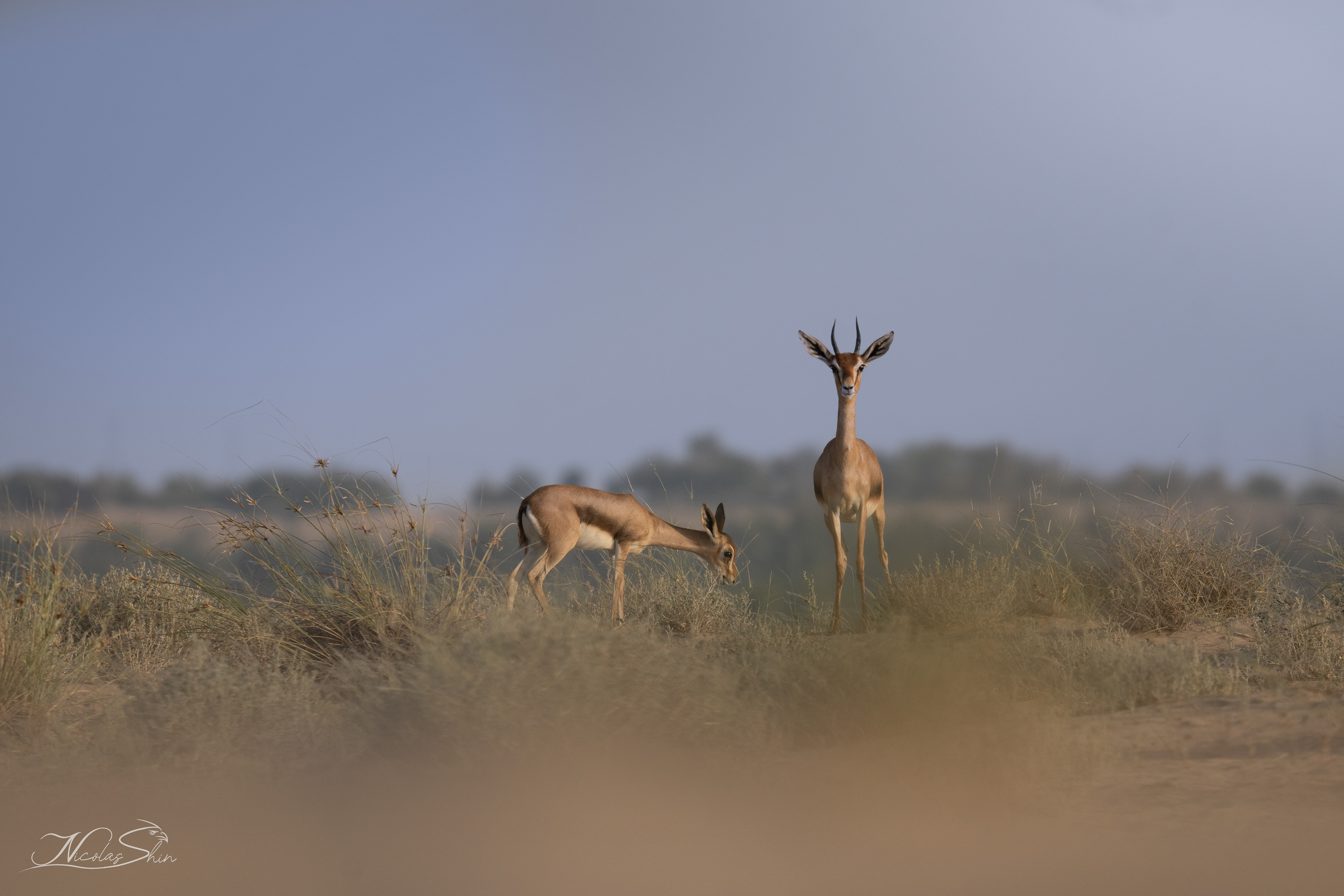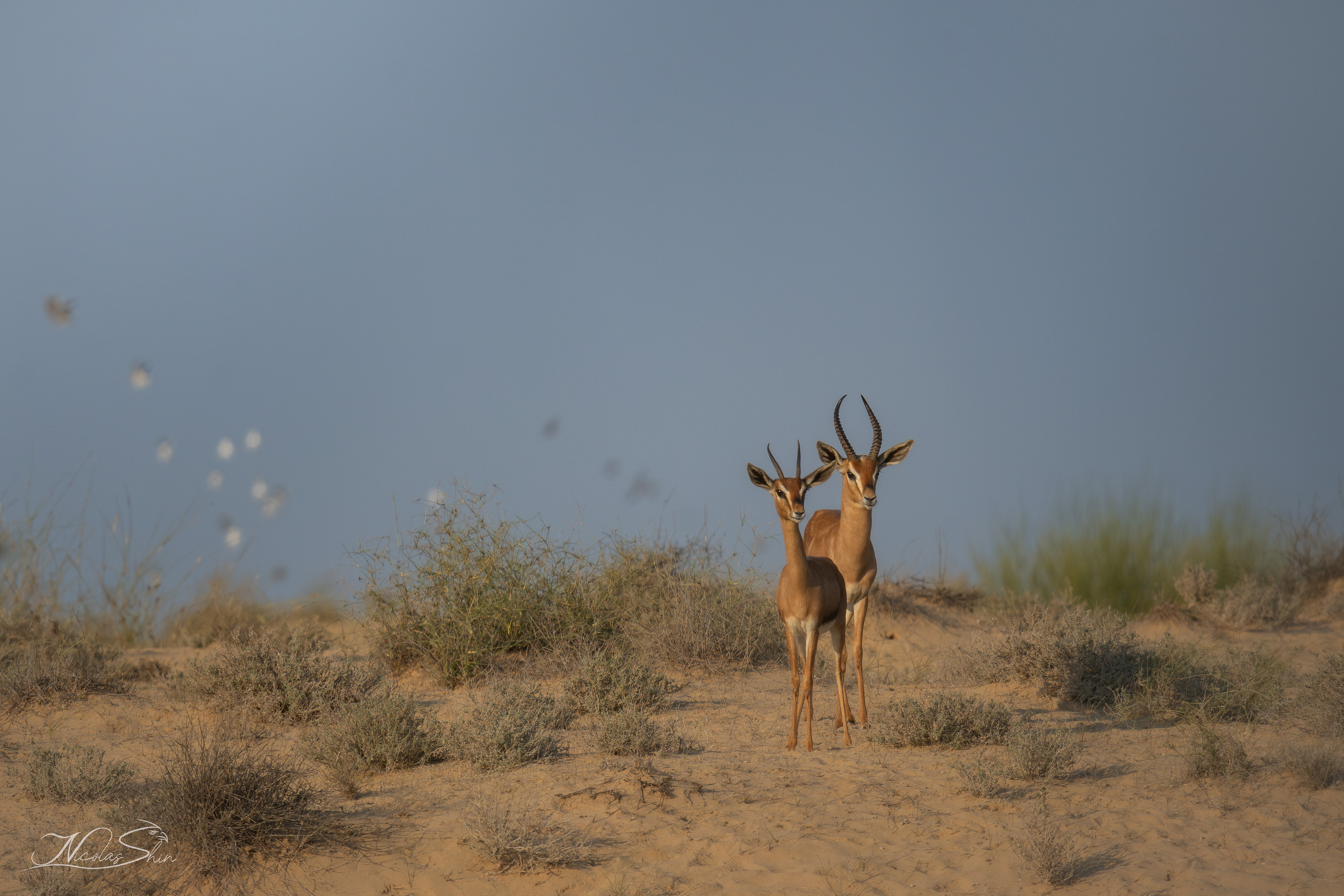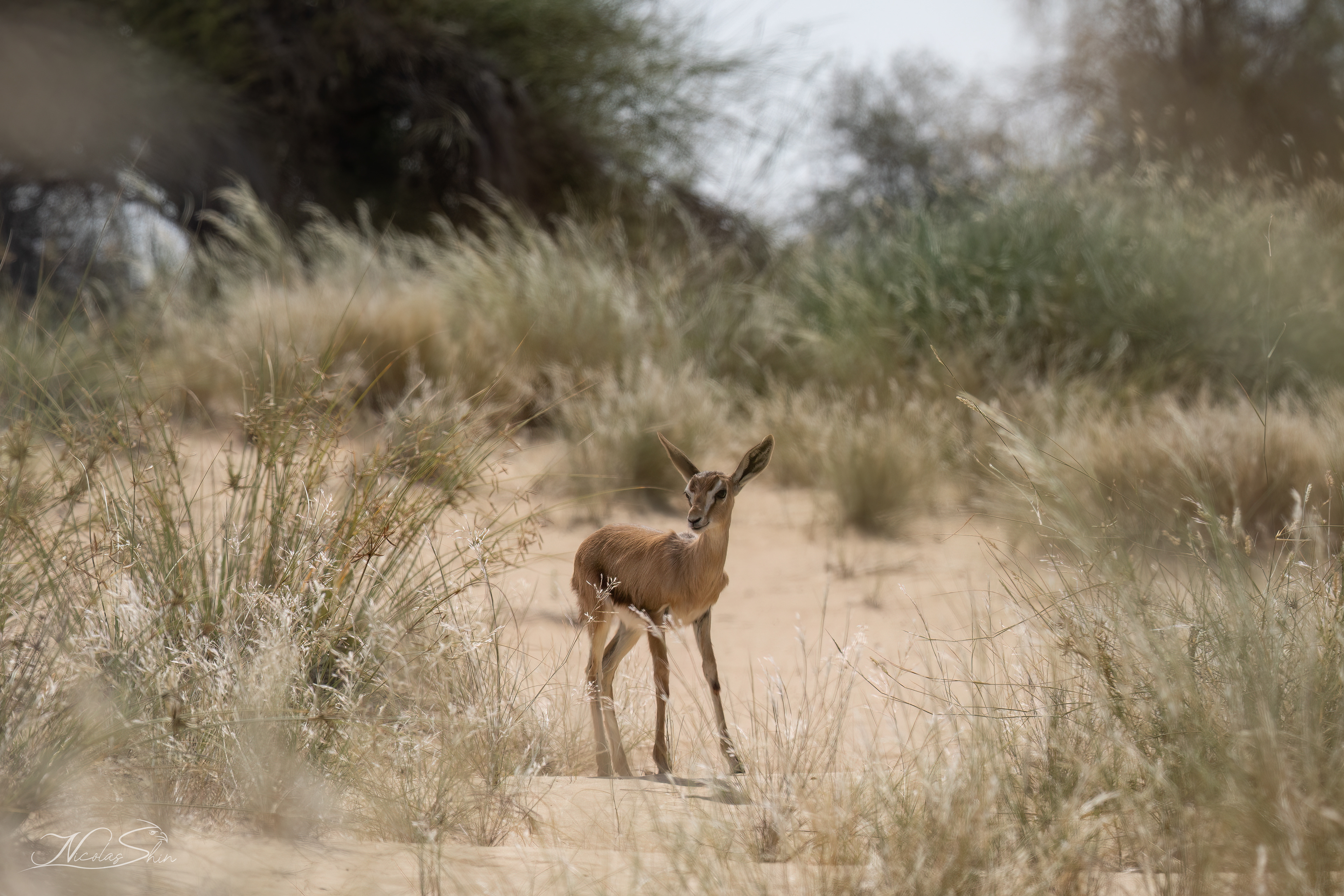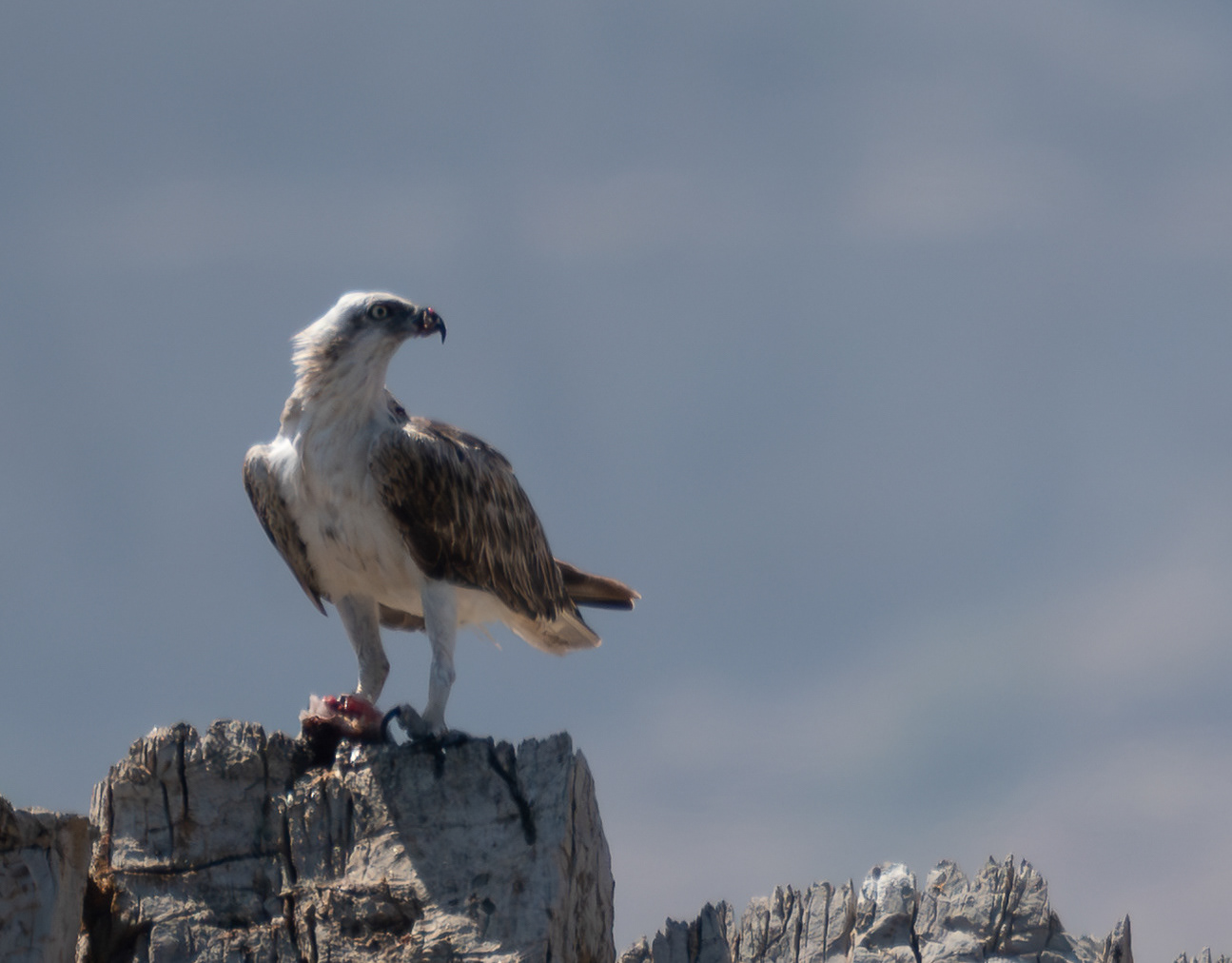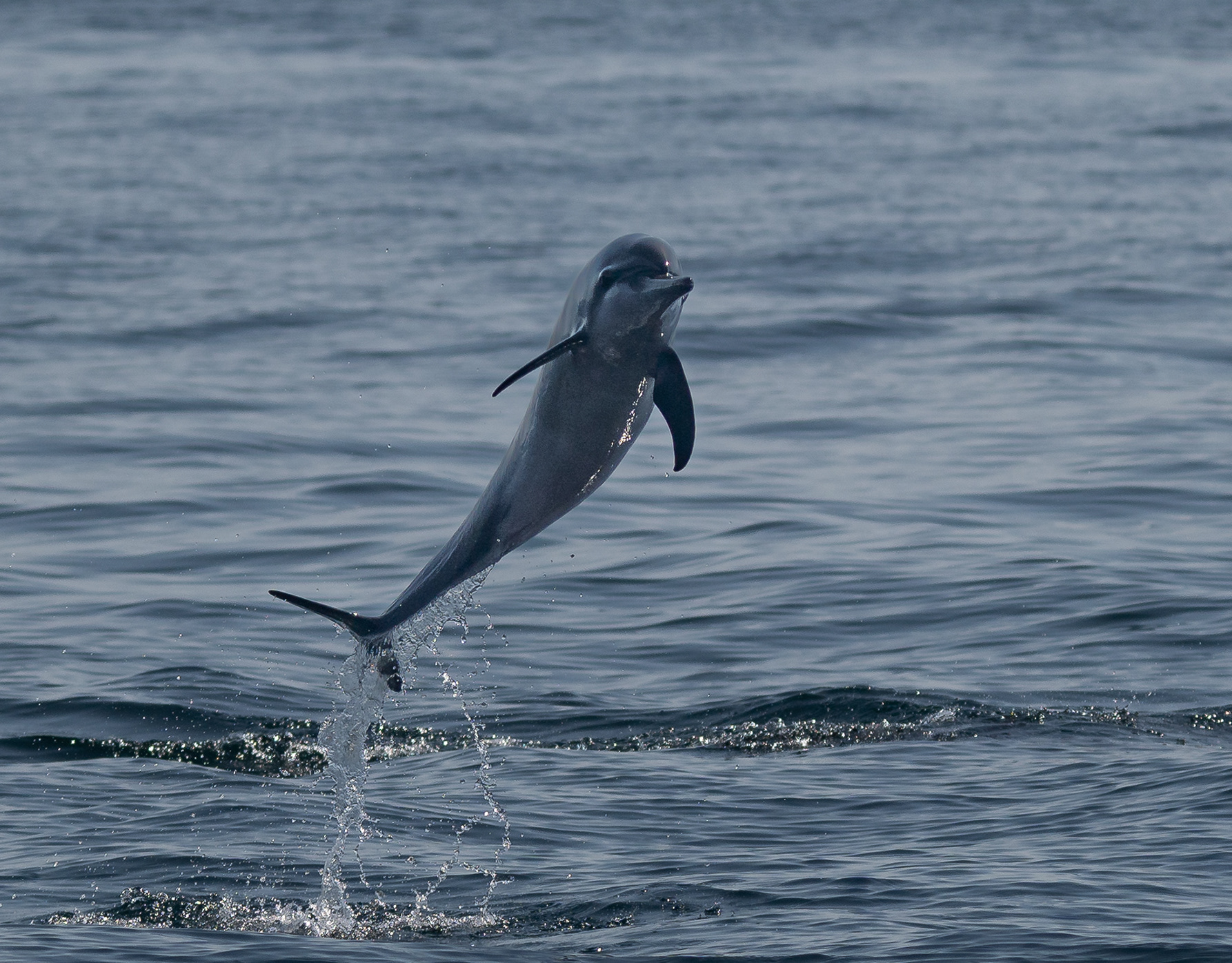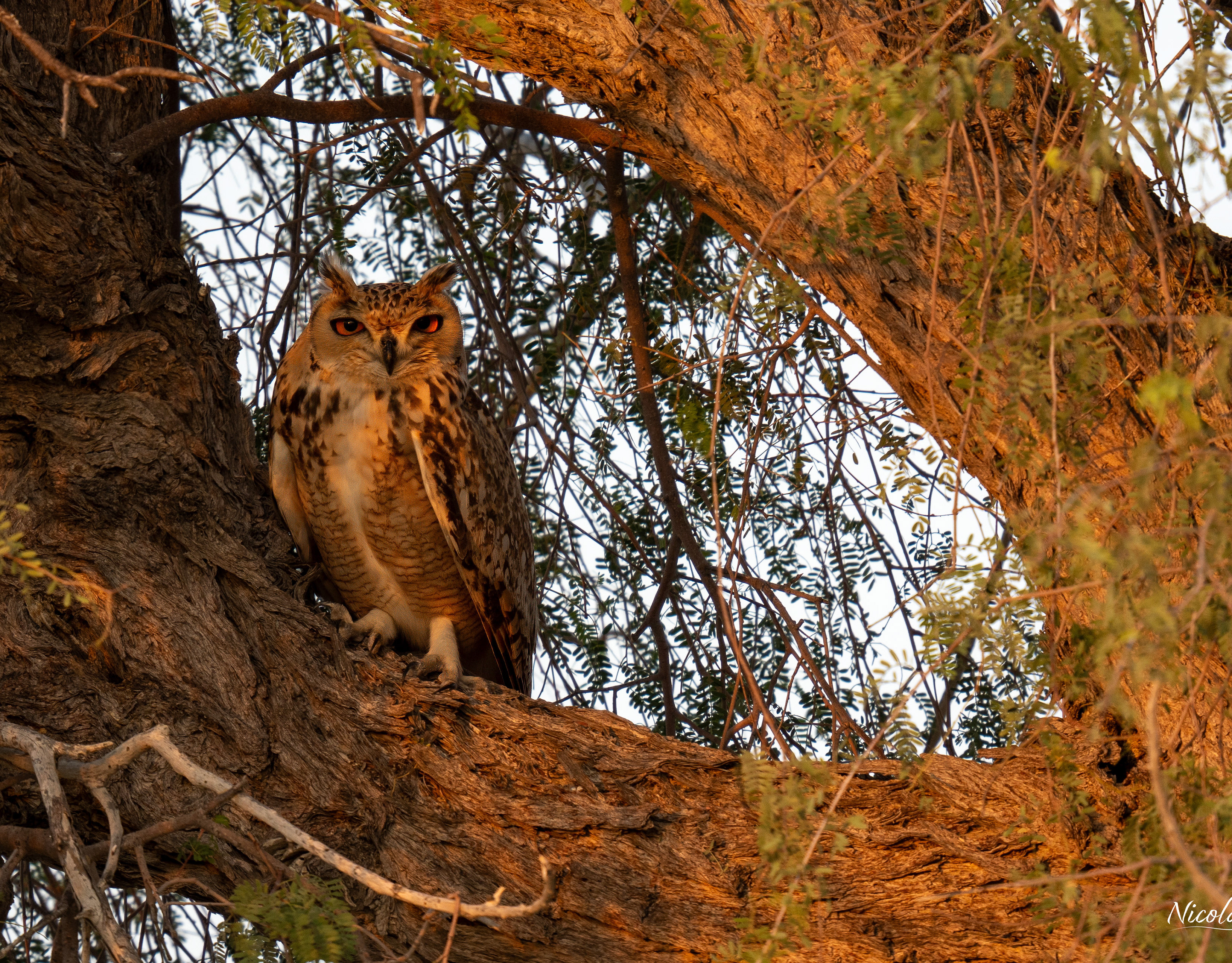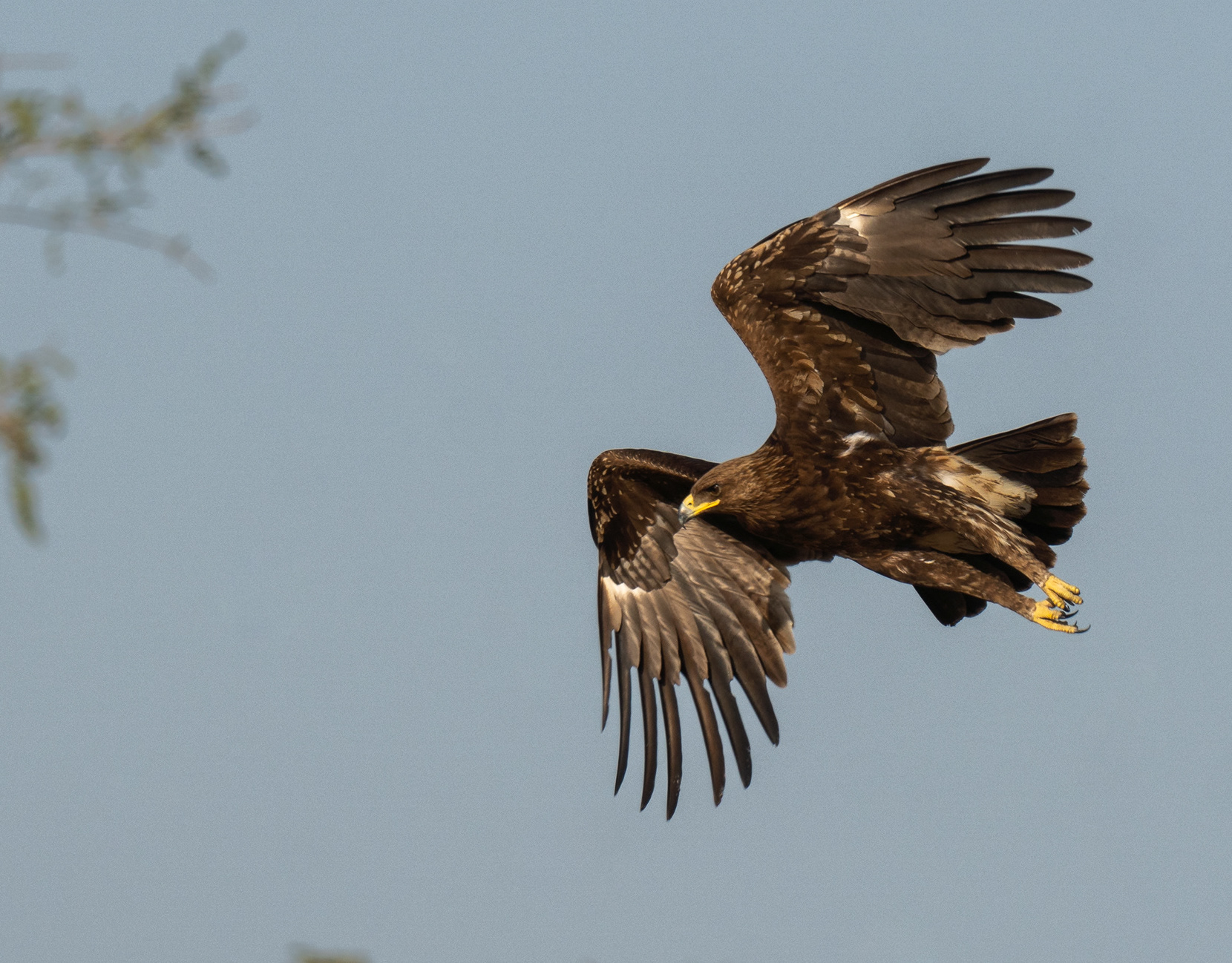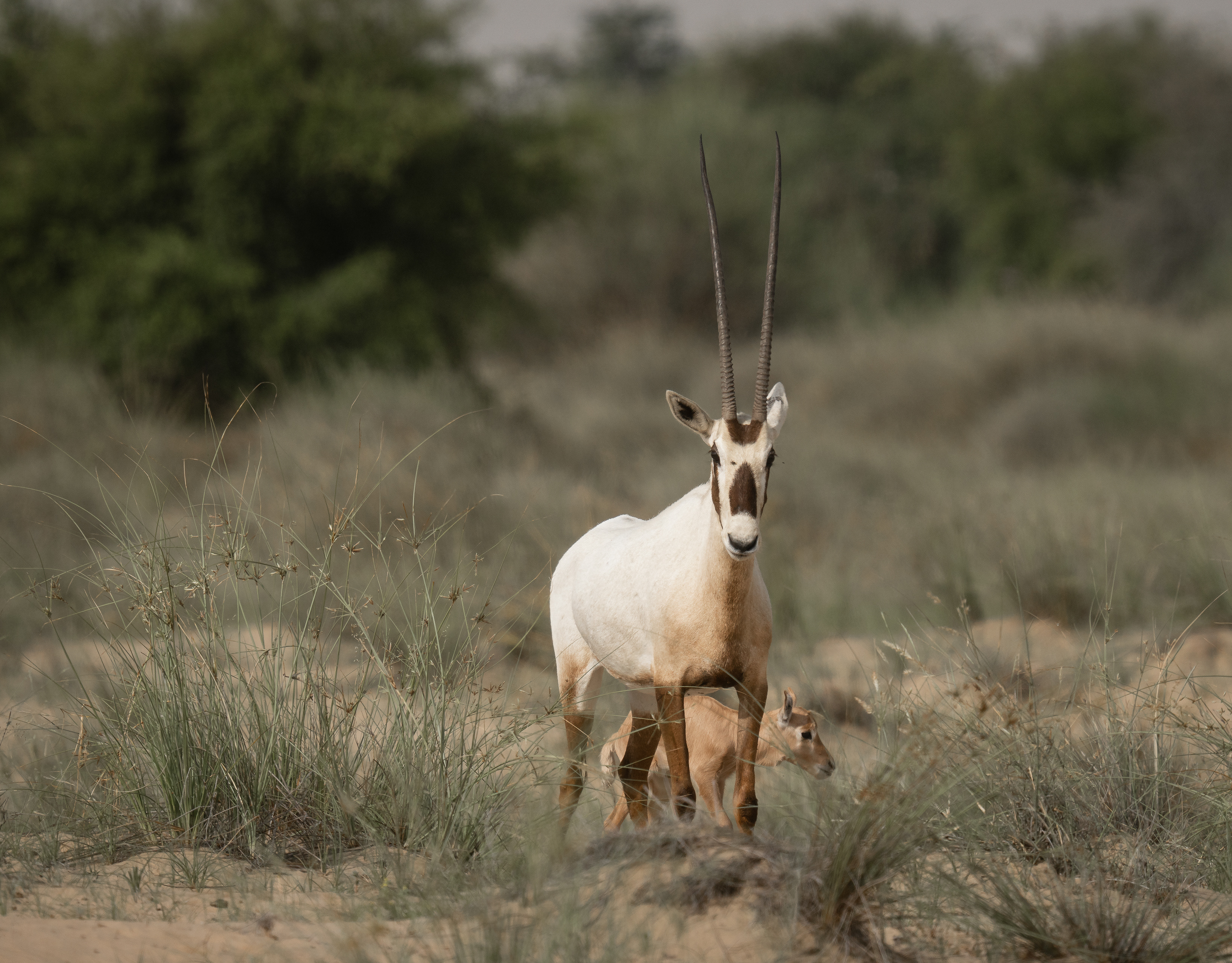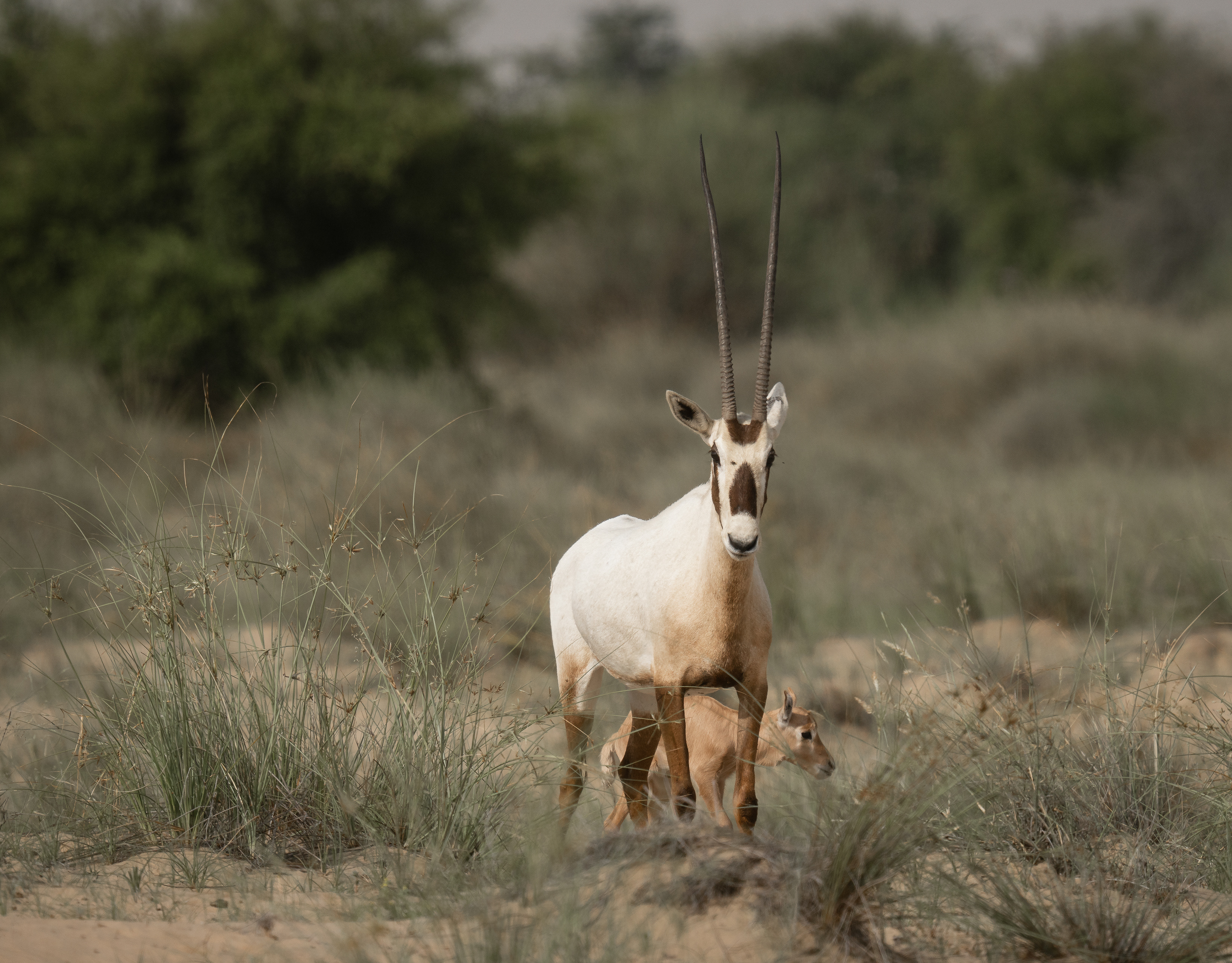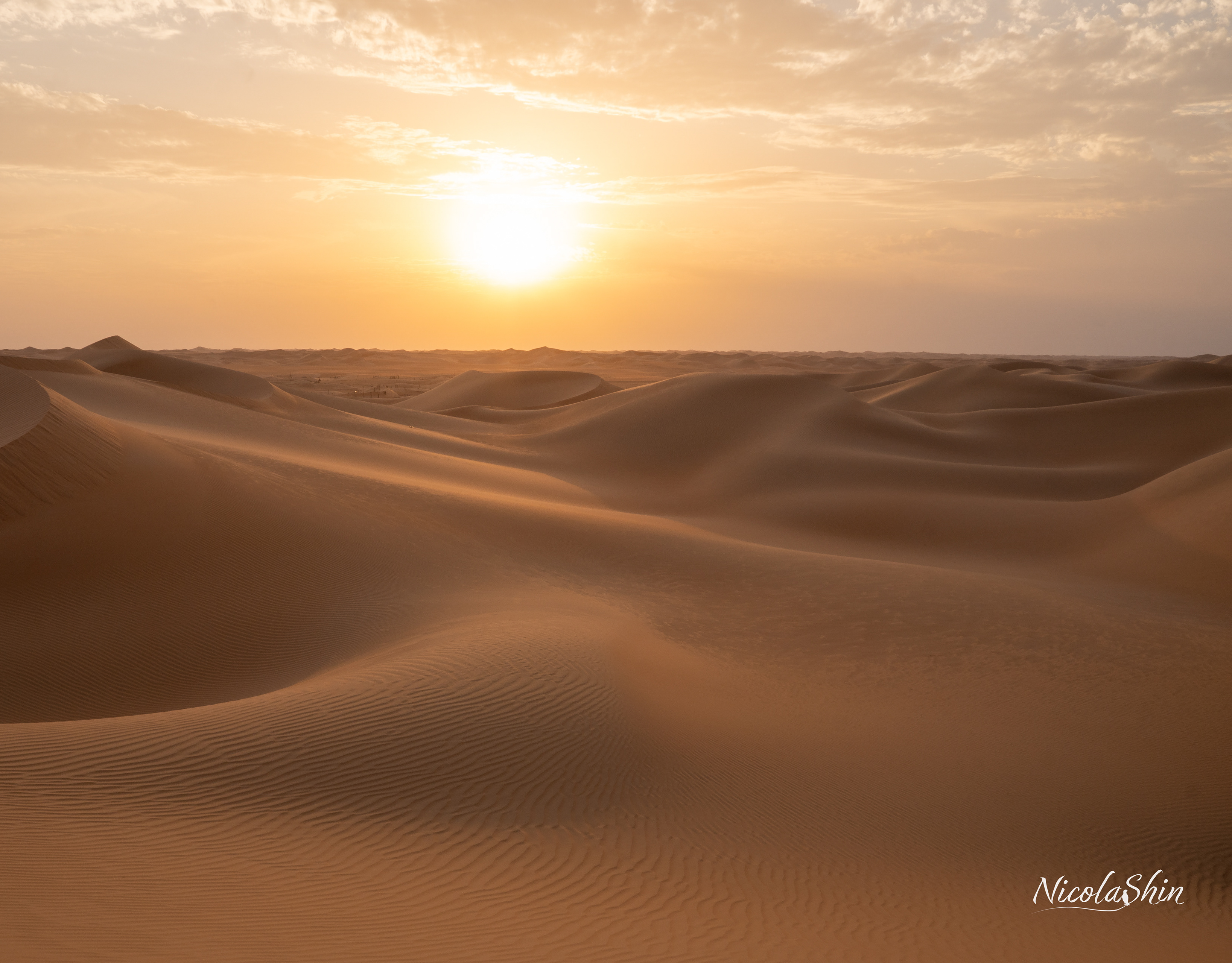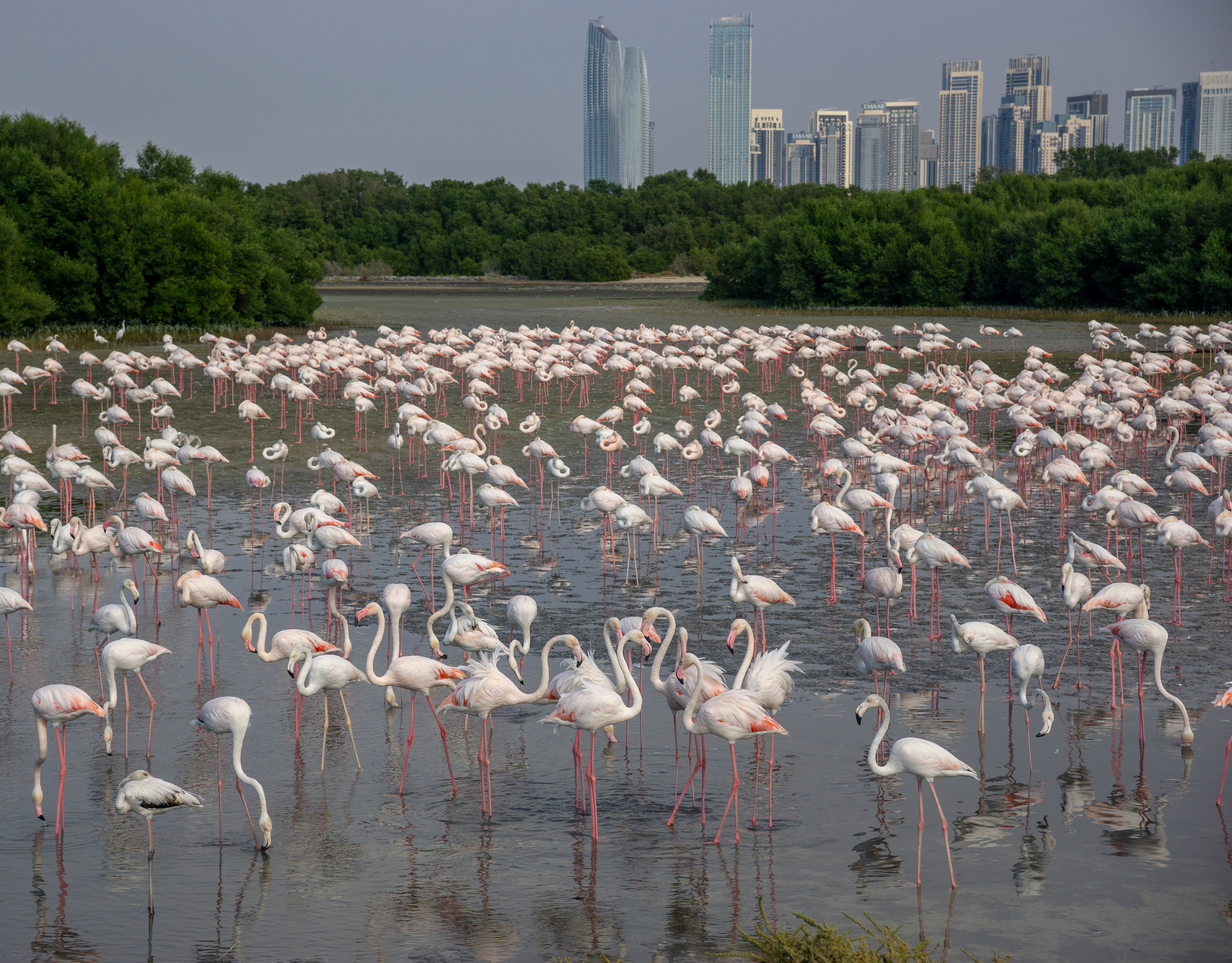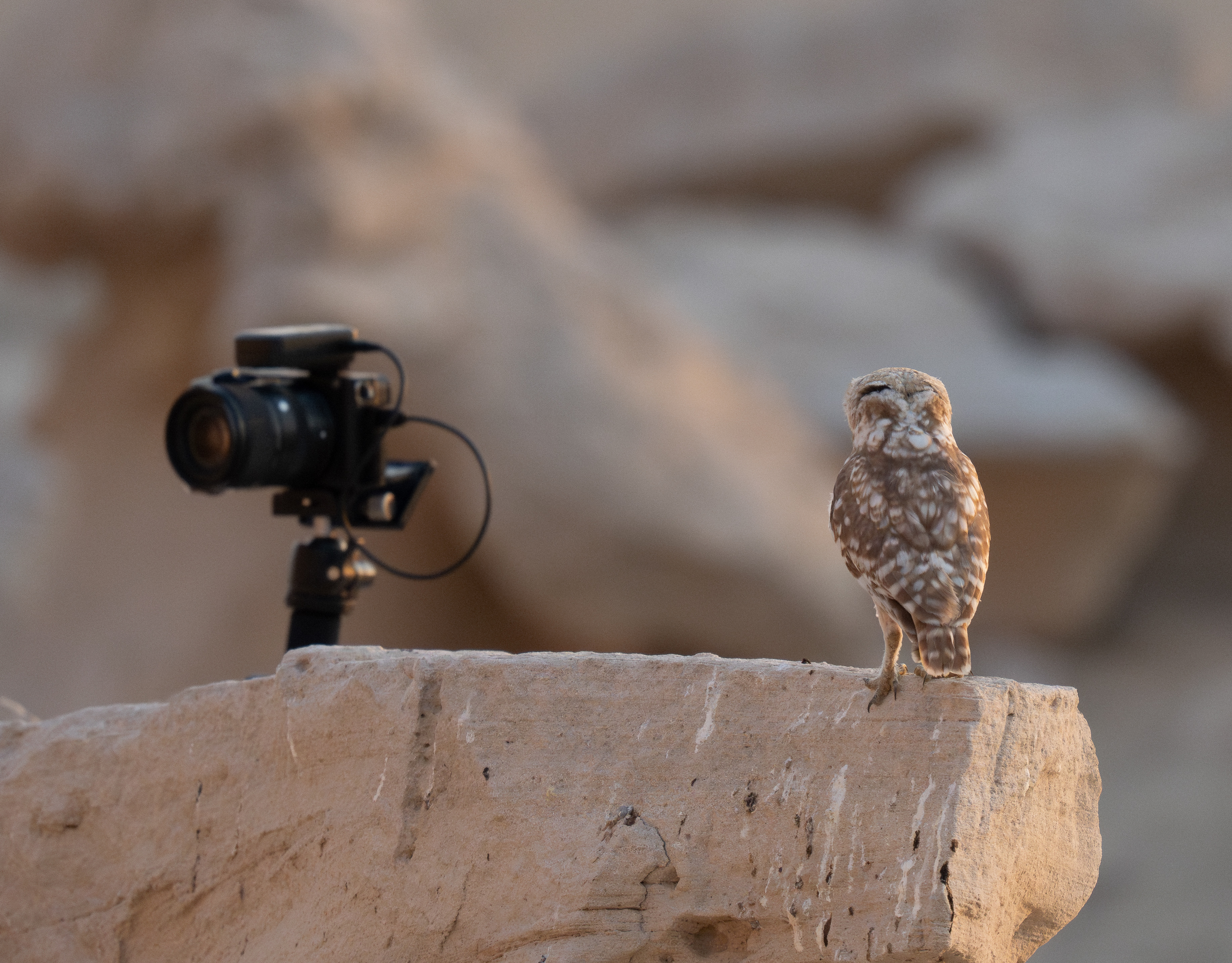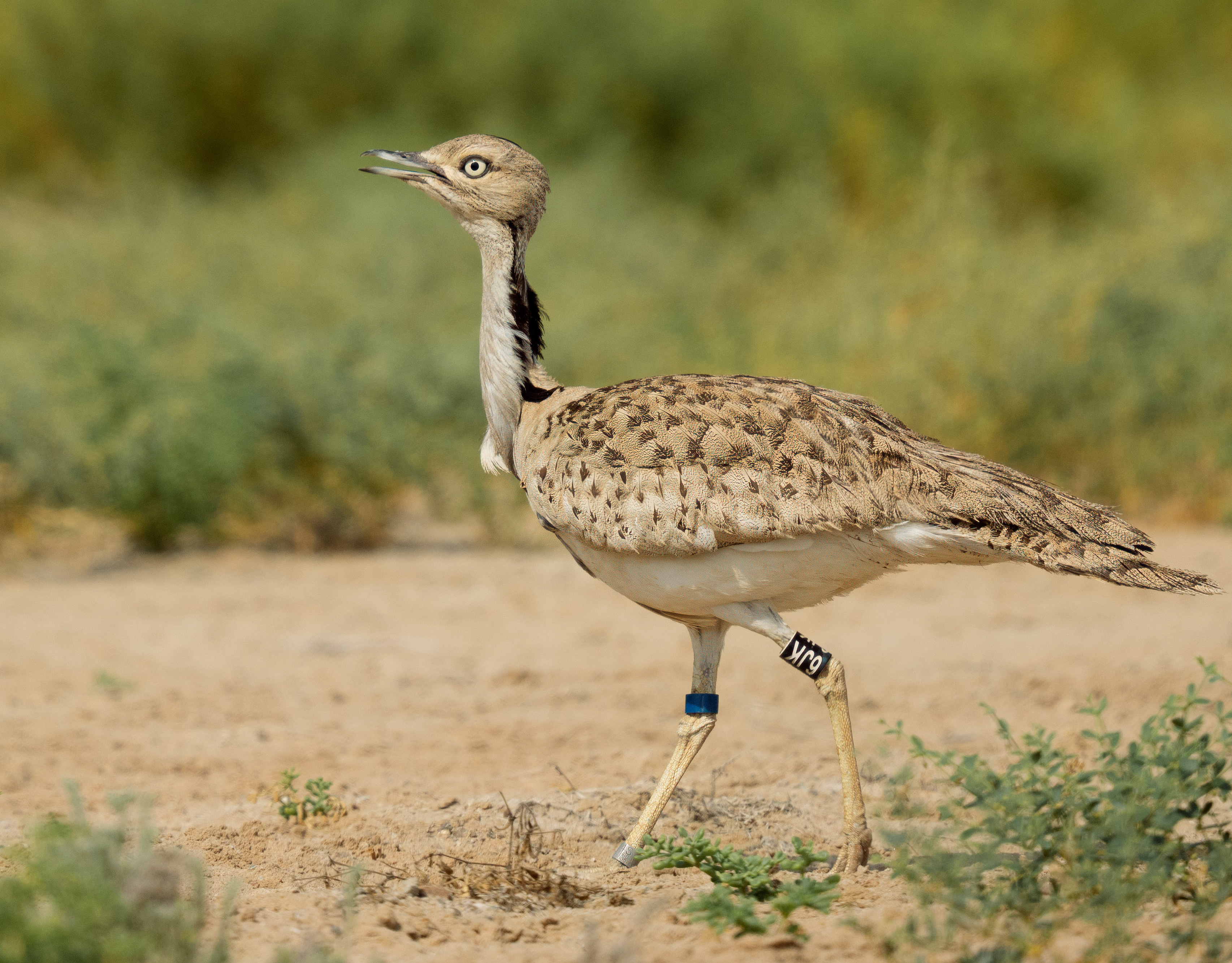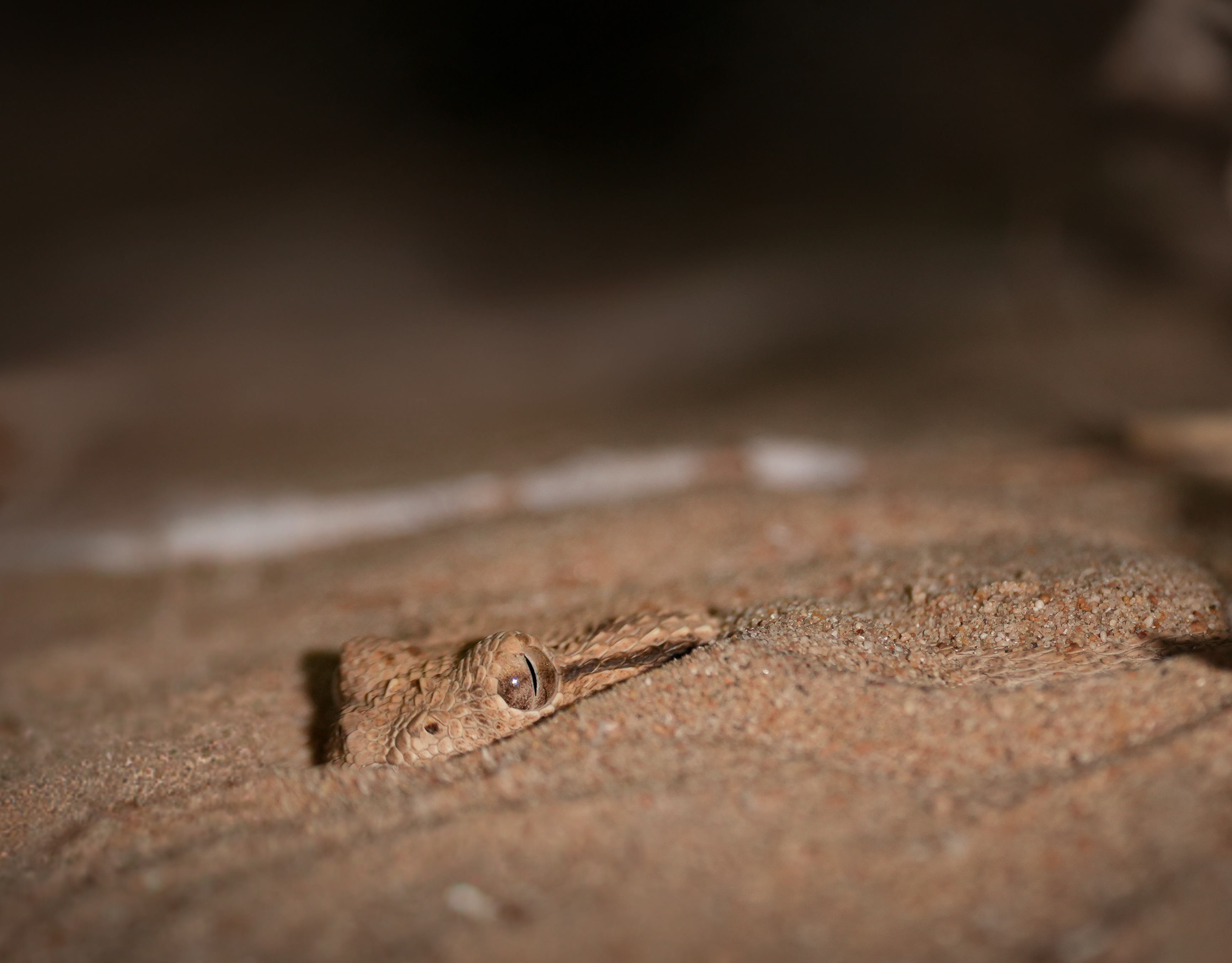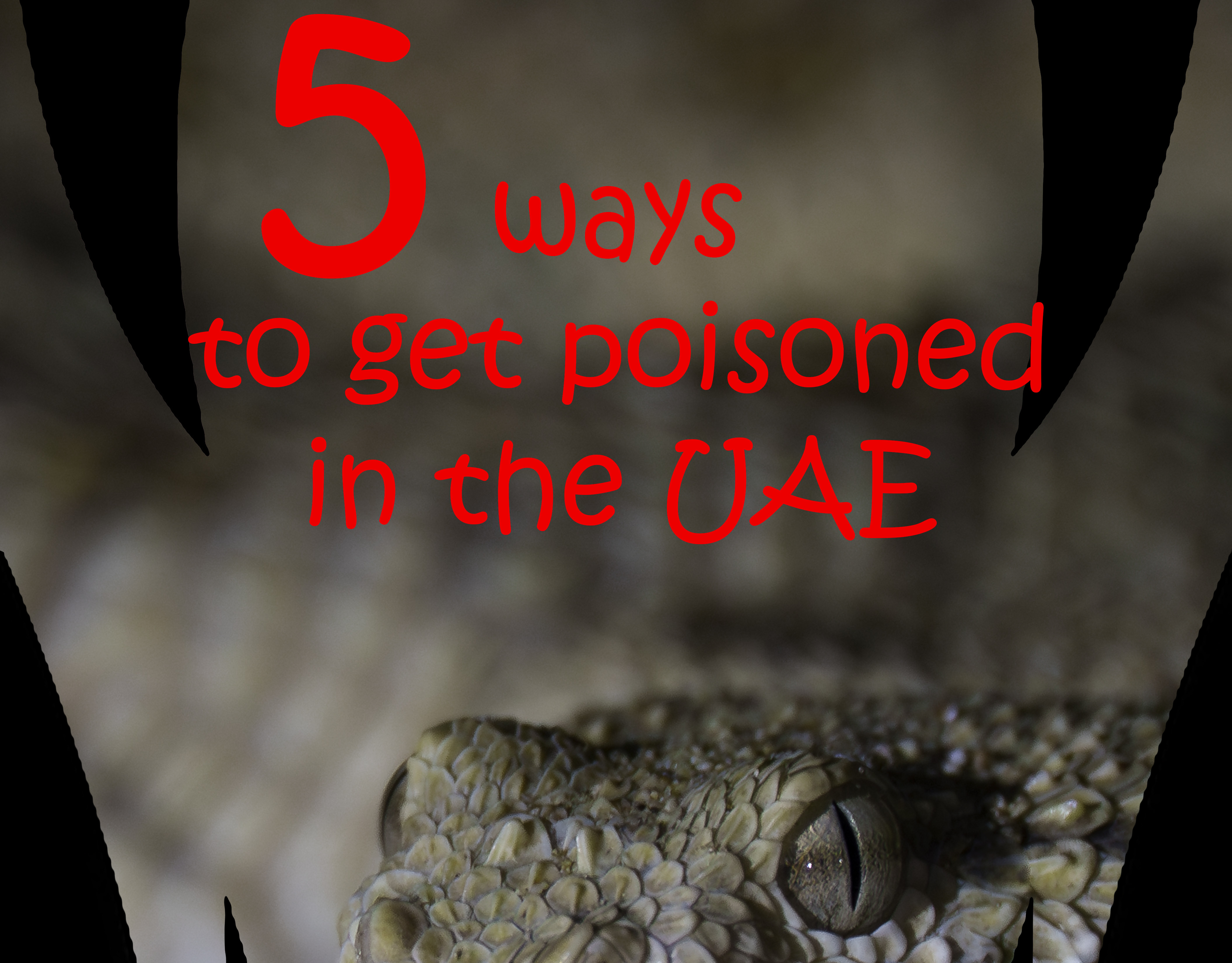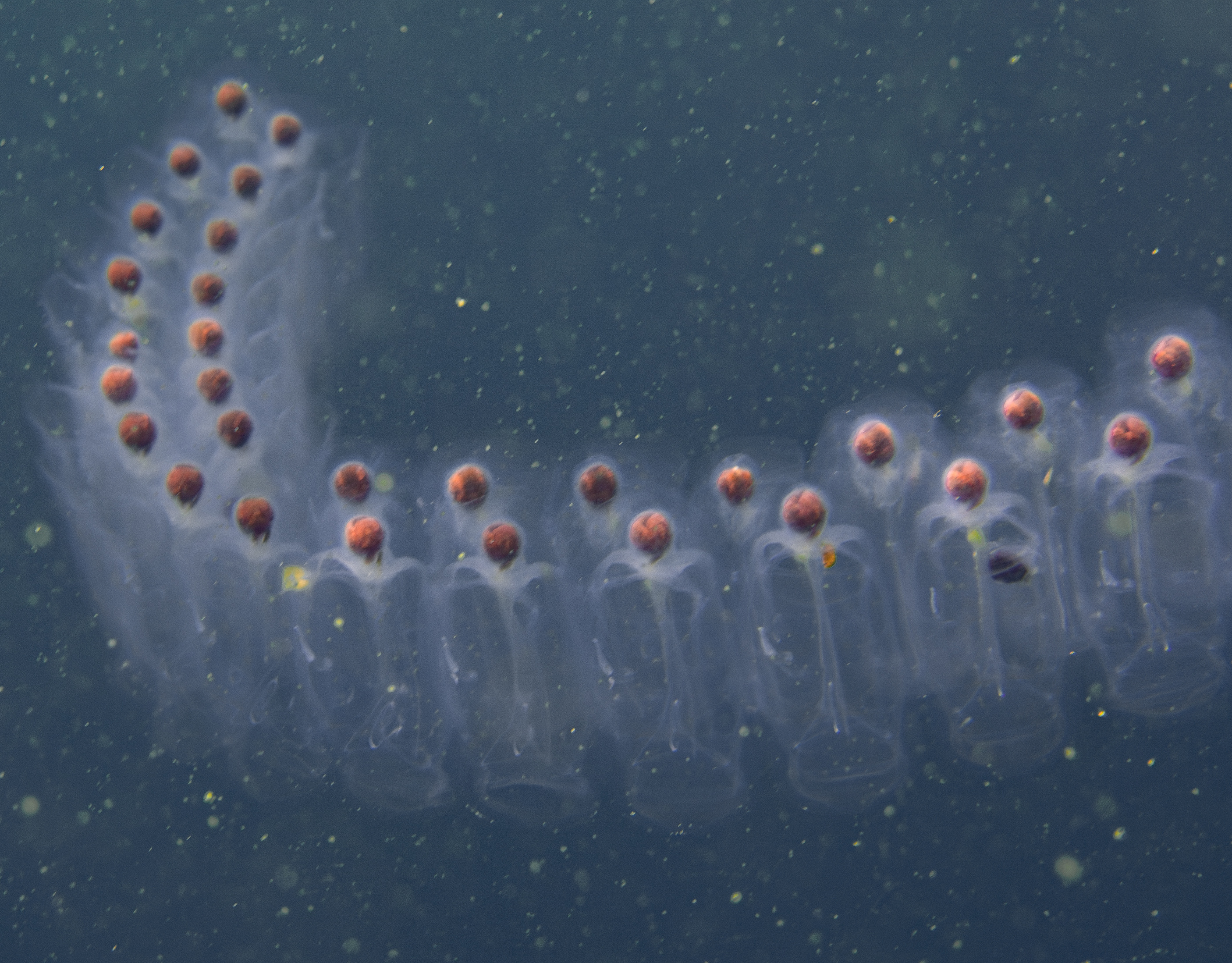May 2024:
The landscape was a vast sea of golden sand, dotted with sparse bushes and the occasional dune. As I walked through the desert, I saw two horns playfully dancing on the other side of a dune. A snort told me that the gazelle had caught my scent. I quickly took a few photos before it moved away with a few elegant jumps. Even though gazelles are common in Al Qudra, it's always a treat to see them moving gracefully through the desert.
The gazelles are not merely inhabitants of the desert; they are deeply ingrained in the cultural tapestry of the UAE. The very name Abu Dhabi, which translates to "father of Gazelle," speaks volumes about the significance of these animals in the region's heritage. Legend has it that Bedouins from the Bani Yas tribe, living around the oasis of Liwa in the second half of the 18th century, led a hunting expedition that tracked a gazelle to a brackish spring on the island. Sheikh Dhiyab bin Isa instructed the creation of a settlement around the spring, which came to bear the name Abu Dhabi, "father of the Gazelle." His son and successor, Sheikh Shakhbut, moved to Abu Dhabi in 1795 (1). Sheikh Shakhbut's great-great-grandson, Sheikh Zayed bin Sultan Al Nahyan, is the founder of the United Arab Emirates.
The UAE is home to two distinct species of gazelles: the Arabian (or Mountain) Gazelle and the Sand Gazelle, both species are classified as vulnerable.
◉ The Arabian Gazelle, scientifically known as Gazella arabica, has a light tan to pale brown coat with striking white underparts and prominent white stripes along its flanks. Their faces are adorned with distinctive dark markings, including patches around the eyes and a stripe running from the eye to the nose.
◉ On the other hand, the Sand Gazelle, scientifically termed Gazella marica, sports a light, sandy-colored coat that seamlessly blends with its desert habitat. Similar to their Arabian counterparts, they have white underparts and distinct dark markings around their eyes.
◉ The Arabian Gazelle, scientifically known as Gazella arabica, has a light tan to pale brown coat with striking white underparts and prominent white stripes along its flanks. Their faces are adorned with distinctive dark markings, including patches around the eyes and a stripe running from the eye to the nose.
◉ On the other hand, the Sand Gazelle, scientifically termed Gazella marica, sports a light, sandy-colored coat that seamlessly blends with its desert habitat. Similar to their Arabian counterparts, they have white underparts and distinct dark markings around their eyes.
Males typically flaunt larger and more robust horns than females.
In both Arabian and Sand Gazelles, both sexes typically have horns, but there are subtle differences. Males generally have thicker, longer horns with visible rings or ridges that circle along their length. Females, in contrast, have shorter and thinner horns that are smoother in appearance, with fewer or no noticeable rings. This detail can help observers distinguish them more easily, especially when photographing or identifying individuals in the wild.
A 2023 study conducted in the Dubai Desert Conservation Reserve (2) observed that over 90% of gazelles were found in pairs or small groups, usually composed of 2 to 6 individuals. Occasionally, both Arabian and Sand Gazelles were seen forming larger herds of up to 15 animals, often in open areas with abundant forage. Interestingly, during my visits to Al Qudra, I have come across significantly larger aggregations—sometimes close to 50 individuals. These large gatherings may occur in cooler seasons or around water sources where vegetation is more plentiful. It is also not uncommon to encounter mixed groups of Sand and Arabian Gazelles, especially in areas where their habitats overlap.
Group composition appears to be fluid—some consist of female-led groups with juveniles, while others are bachelor herds of young males. Solitary males can also be seen patrolling their territories, particularly during the breeding season.
Arabian Gazelles are typically more territorial and agile, often darting into rocky hills and wadis when disturbed. In contrast, Sand Gazelles are more suited to open terrain and rely on speed and distance rather than cover. Both species exhibit a strong awareness of their surroundings and will often freeze before fleeing, making them challenging but rewarding subjects for wildlife photography.
Arabian Gazelles generally give birth to a single calf, while Sand Gazelles are more likely to deliver twins. Remarkably, mothers will hide their newborns in tall grasses or shallow depressions in the sand during the first days of life while they forage. The young remain motionless, camouflaged by their sandy coats and virtually scentless—a clever adaptation to avoid predators like foxes or raptors.
Females return periodically throughout the day to nurse their hidden offspring. After a few days, the young are strong enough to follow the mother and gradually begin grazing. By the time they are a few weeks old, they are agile and alert—well-suited to life in the harsh desert landscape.
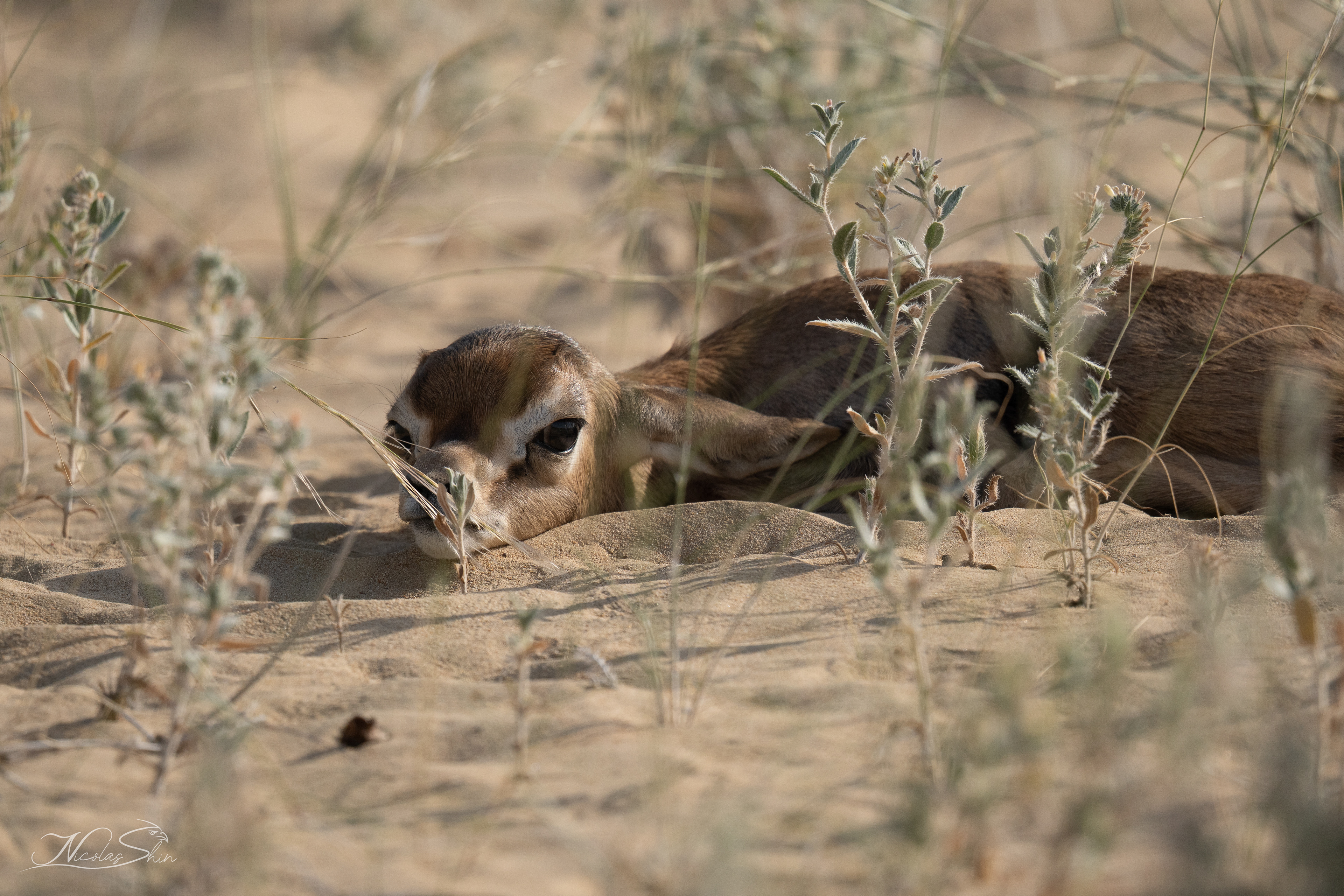
Single Arabian calf
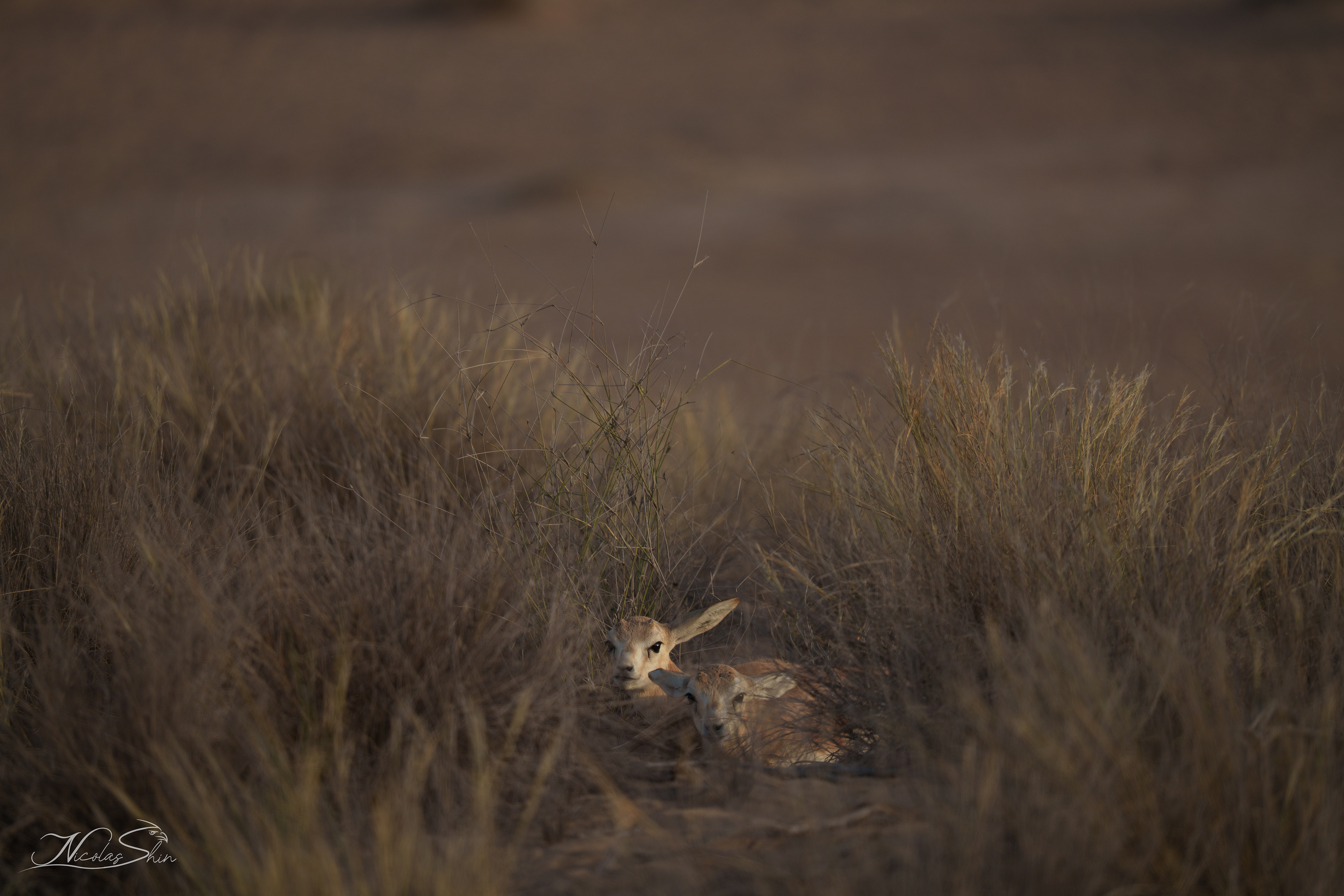
Sand Gazelle twins


